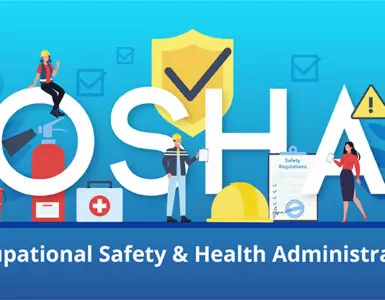Introduction
OSHA training for healthcare workers has never been more crucial. With regulatory compliance under increased scrutiny, healthcare facilities must ensure that their staff is adequately trained to prevent workplace hazards, ensure patient safety, and comply with federal regulations. Recent trends indicate a heightened focus on compliance violations, while private initiatives are stepping up to address these gaps through specialized training programs. This article explores these trends, the challenges healthcare facilities face, and how businesses offering OSHA training can position themselves as essential partners in improving workplace safety.
OSHA Training in Healthcare: Why It Matters
The healthcare sector is one of the most regulated industries in the U.S., with OSHA playing a critical role in ensuring worker safety. From bloodborne pathogens to respiratory protection and hazard communication, OSHA mandates several training requirements that healthcare employers must adhere to. Failing to meet these requirements can result in severe penalties, legal consequences, and workplace injuries.
Recent OSHA reports highlight that healthcare settings continue to be among the most cited industries for workplace safety violations. This reinforces the need for robust, ongoing training programs tailored specifically for healthcare professionals.
Trending OSHA Compliance Issues in Healthcare
According to the data from OSHA inspections in healthcare settings, the most commonly cited violations include (2021)
- Bloodborne Pathogens Standard (1910.1030) – 184 violations
- Hazard Communication Standard (1910.1200) – 80 violations
- Respiratory Protection (1910.134) – 76 violations
- Electrical – General Requirements (1910.303) – 29 violations
- Lockout/Tagout (1910.147) – 24 violations
The dominance of bloodborne pathogens violations underscores the ongoing need for comprehensive infection control training. Hazard communication and respiratory protection are also recurring compliance concerns, particularly with the increased use of PPE in healthcare facilities post-pandemic.
Private Sector Initiatives: Addressing OSHA Training Gaps
As OSHA continues to emphasize compliance in healthcare, several private initiatives have emerged to bridge the training gaps:
- Association of Occupational Health Professionals in Healthcare (AOHP): AOHP has been actively working to improve healthcare workplace safety through education and training programs for occupational health professionals.
- Health Care Compliance Association (HCCA): HCCA provides compliance workshops and training opportunities to help healthcare organizations stay ahead of regulatory changes.
- Voluntary Protection Programs (VPP): OSHA’s VPP encourages private healthcare providers to adopt proactive safety measures, and many organizations have developed specialized training in response to this initiative.
- OSHA’s Compliance Assistance Resources: These resources offer healthcare employers guidance on how to implement training programs that align with current regulatory expectations.
Business Opportunities for OSHA Training Providers
For businesses specializing in OSHA training, these trends present significant opportunities:
- Customized Compliance Training: Many healthcare facilities require tailored OSHA training programs that address their specific compliance gaps. Offering modular training solutions that focus on the most-cited violations (e.g., bloodborne pathogens, hazard communication) can be a strong value proposition.
- Digital Learning Solutions: The demand for online and blended training models is growing. eLearning platforms offering interactive compliance training modules are well-positioned to serve the industry.
- Partnerships with Healthcare Organizations: Hospitals and clinics are increasingly outsourcing their compliance training to specialized providers. Building partnerships with healthcare institutions can provide a steady stream of business.
- Certifications and Accreditation Programs: Healthcare organizations are more likely to invest in training solutions that provide OSHA-recognized certifications. Offering accredited programs can differentiate a training provider in the market.
Conclusion
The regulatory landscape for OSHA compliance in healthcare is evolving rapidly. With an increasing focus on violations and enforcement, healthcare facilities must invest in continuous training to protect their workforce and avoid penalties. Private initiatives are playing a key role in addressing these training needs, creating opportunities for businesses specializing in OSHA compliance training.
For providers like emPower eLearning, this is a prime time to position training solutions as indispensable to healthcare organizations. By focusing on compliance-driven education and leveraging the latest trends, businesses can help bridge the gap between regulation and workplace safety.
As the industry adapts, those who provide effective, flexible, and targeted OSHA training for healthcare workers will be at the forefront of this essential sector.






